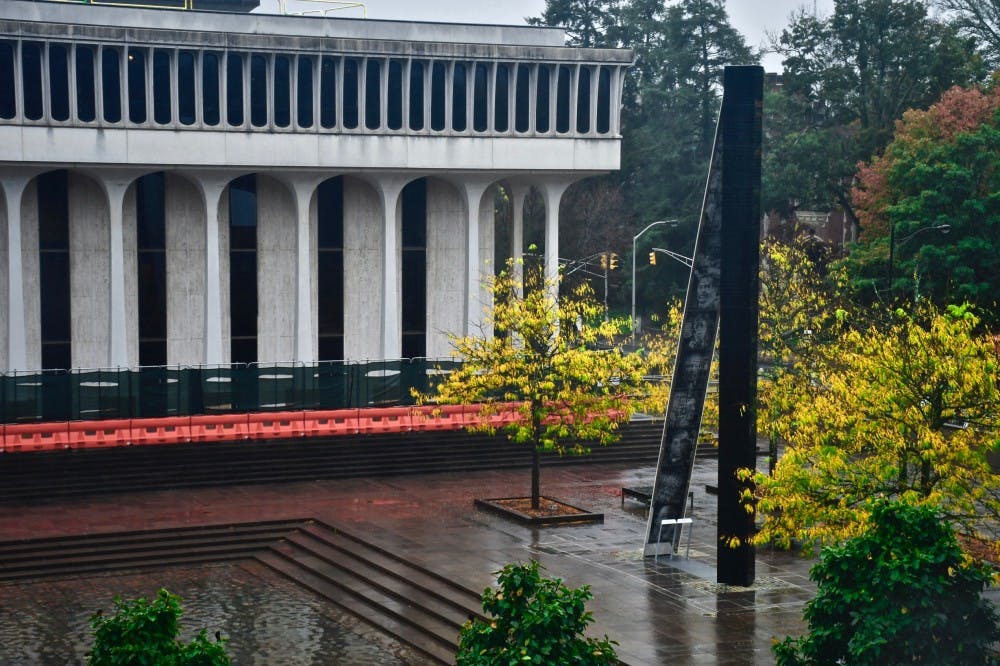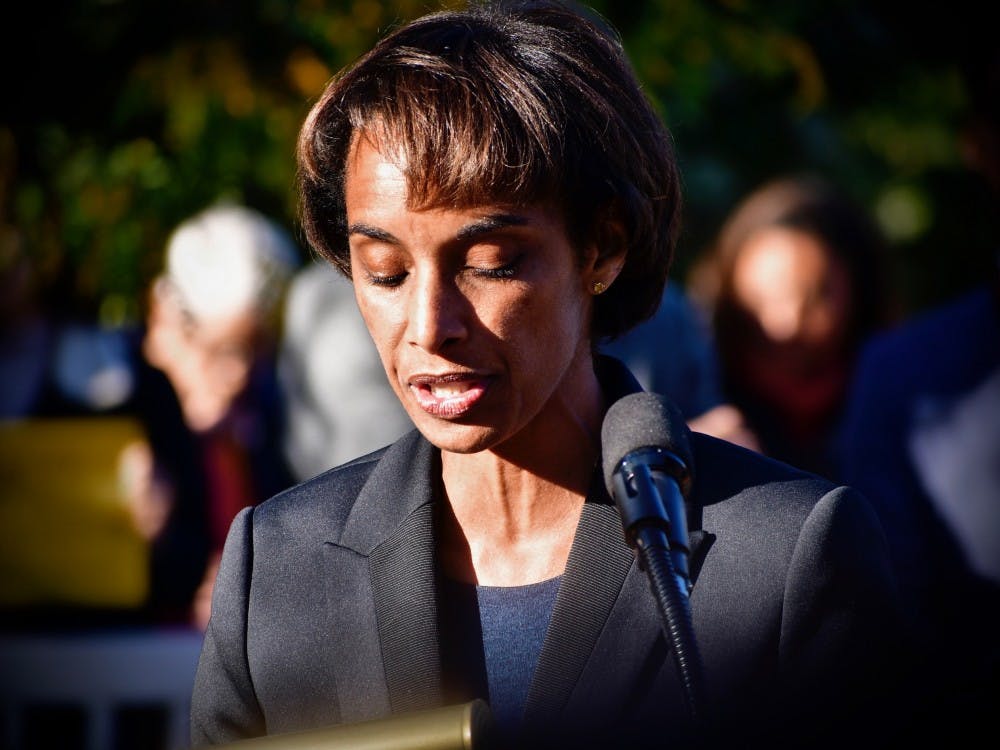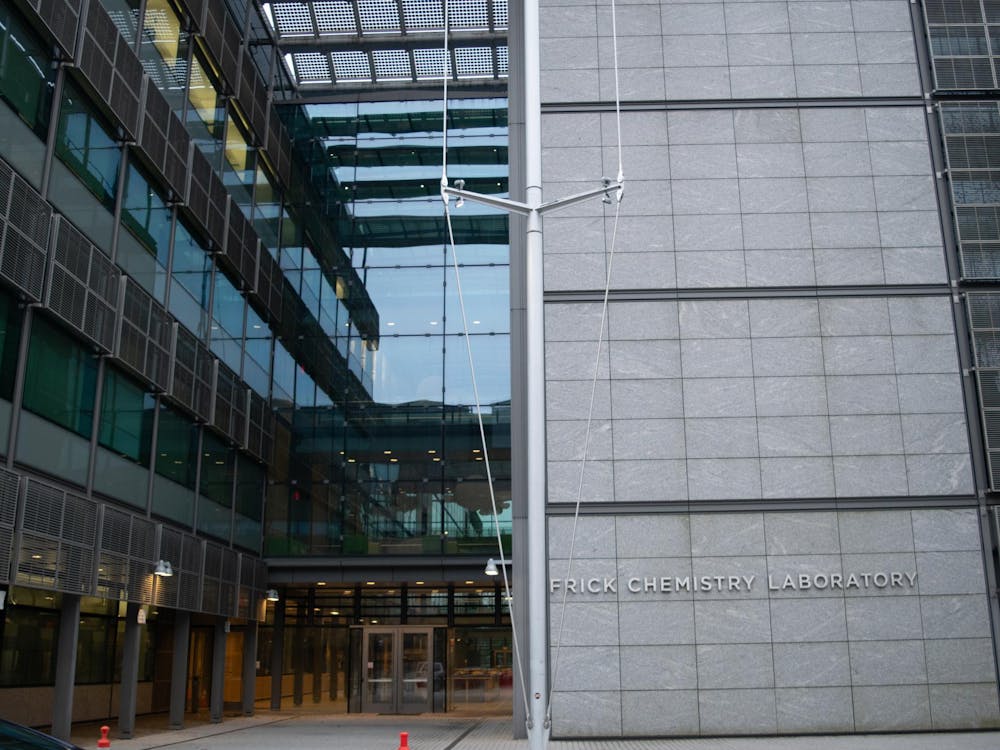On Saturday, October 6, The Daily Princetonian sat down with Dean of the Woodrow Wilson School Cecilia Rouse to discuss the recent Walter Hood installation — “Double Sights” — which grapples with the complex legacy of former University president and President of the United States Woodrow Wilson, Class of 1879.
Below is a lightly edited and condensed transcript of the conversation.
Daily Princetonian (DP): Dean Rouse, thank you so much again for sitting down with us. I wanted to begin with a question about the context for the installation. Can you walk me through the process for deciding the statue be built, hiring Hood architecture studio, et cetera?
Cecilia Rouse (CR): Sure. If you recall, in the Trustees’ Committee to consider the name of Wilson and how Wilson was recognized on campus, they had a series of recommendations for the University. Among them was that there be a “marker” that highlighted the complex legacy of Wilson, positive and negative. Based on what Brent Henry [’69] explained in [the McCosh 50 conversation], the committee really wrestled with the fact that Wilson had many great positive accomplishments, but also was racist and held many very negative views, which actually got implemented in policy in various places. For example, many people believe he re-segregated the federal government; actually, he segregated the federal government for the first time. He was a very complicated person.

Walter Hood’s “Double Sights,” with Robertson Hall, which houses the Woodrow Wilson School of Public and International Affairs, in the background.
Photo Credit: Jon Ort / The Daily Princetonian
The Trustees’ Committee decided not to take Wilson’s name off the Woodrow Wilson School, but they wanted the University to be more honest and reckon with his complexity in a way it never had. President Eisgruber asked me and Ron McCoy, who’s the University architect, to co-chair a committee [that would respond]. The committee was comprised of faculty, students, and alumni. We solicited the views of the current campus community as well as alumni — we had a website where we asked questions about what should be the scope of the marker, should [it] be large or be small, should it have didactic columns — we asked them various questions, and based on that, we put together an RFP [request for proposal] ...
We didn’t just do an RFP where people would write in and say “we want a bid.” Ron McCoy did some work on various architects and landscape architects who had worked on installations ... which tried to deal with complexity, and ... we invited 10 or 12 people to compete ... The advantage of that was we weren’t just selecting people based on their resumes and what they had done in the past — they had to actually submit a bid and a concept of what they would do.
The submission by Walter Hood was just head and shoulders bolder, more compelling than any of the other submissions. We still invited three groups in to present in person, but the committee unanimously recommended Walter Hood. It was ultimately President Eisgruber’s decision ...

But that’s not where it ended: Walter Hood’s process is that he likes to very much work with the community. He held focus groups on campus with students, faculty, staff, alumni — and he learned a lot, and the piece evolved through that process, including changing the name, as he just explained, from “Double Consciousness” to “Double Sights.”
DP: And how do you feel about the final product?
CR: I think it’s fabulous! I appreciate that there is a protest right now, and that not everybody is happy with the Trustee decision — that was a Trustee decision. It was not my decision, it wasn’t even President Eisgruber’s decision ... [The Trustees of the University] make the ultimate decisions ...
But what I think really must be recognized is that this is a very bold piece of art for Princeton’s campus. One cannot encounter that sculpture, that installation, and not be confronted with Wilson’s racist past ... on the outside are Wilson’s actual quotes, some of which are more positive, some of which are more negative, and what I think is interesting about that is since they are his own words, they will be interpreted differently by different people ... Every time you come, you can read a little more, but you’re confronted with this complexity of Wilson.

It’ll be bold, and it will force people to confront [his legacy] for years, decades to come.
DP: That’s interesting that you mention the protests, because I’d be remiss if I didn’t ask about those. I pulled out a quote from a ‘Prince’ op-ed written by a current Woodrow Wilson School graduate student and co-signed by other graduate students. Did you see it?
CR: I did.
DP: It says, “Despite what the report claims about the marker, it seems that this entire years-long exercise — including the decision to keep the name — is about keeping the University as it is, or changing it as little as possible, and then trying to insulate that position from criticism by dressing it up in committees, reports, and campus installations.”
Do you believe this is a fair characterization? That the installation is a band-aid solution to a larger problem?
CR: I understand that students cannot see all that has changed on this campus. The iconography is the tip of the iceberg, in my humble opinion. I have seen, over the last ... six years with the Black Justice League protests, the University, the Woodrow Wilson School — we have all upped our game. We are doing much, much more to help first-generation students, for example, be more acclimated to campus before they get to campus, they have put into place far more student supports, and supported many more student groups, to help ensure that we’re not just admitting a diverse student body, but helping them get through and feel more comfortable on campus — the renovation of the Carl A. Fields Center, I think, is the minimum example of that ...
I see efforts all through this campus to try to make the experience more welcoming ... for a diverse group of students, to make sure they have the supports that they need, and that they feel welcome. Is there more work to be done? Absolutely. I’m not trying to declare, “Mission Accomplished.” But the progress I have seen even in the last three, five, six years is phenomenal, and I think if we continue at this rate, we’re going to be in a good place very soon. Again, this is something that will never change — there will always be new issues and there will always be people that need to be integrated, and the University will always need to evolve. The marker is not meant to suggest that this was the big response ...
One aspect that I know President Eisgruber is proud of, but which I think is very under-appreciated, is the pipeline program to prepare students of color for graduate school. What I find remarkable about that investment by Princeton is that, if we’re going to change the faculty, which is the hardest part to change, because in order to have diverse faculty, you have to have diverse graduate students, and the graduate students have to then want to join the academy, which not everybody wants to do. But many students of color don’t know that they want to go to graduate school when they first arrive to college, or when they go to college, they’re not quite prepared for it — they didn’t have the same opportunities ... What’s remarkable about it is that it’s not necessarily going to benefit Princeton. [President Eisgruber] is making this investment for the good of higher education writ large.
Really, this commitment to trying to diversify higher education writ large, to diversify Princeton is genuine, but it’s slow going. It doesn’t just happen by waving a magic wand — it takes more than a year. But there has been tremendous progress.
DP: Dean Rouse, thank you so much again for sitting down with us.
CR: You’re very welcome.








